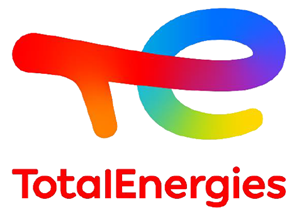
WASHINGTON — The Department of the Interior today announced its approval of the Revolution Wind project. Located about 15 nautical miles southeast of Point Judith, Rhode Island, the project will have an estimated capacity of 704 megawatts of clean energy, capable of powering nearly 250,000 homes. The project is expected to create an estimated 1,200 local jobs during the construction phase.
Today’s announcement marks another step in fulfilling President Biden’s goal to deploy 30 gigawatts (GW) of offshore wind energy capacity by 2030. This is the Department’s fourth approval of a commercial-scale, offshore wind energy project, joining the Vineyard Wind project offshore Massachusetts, the South Fork Wind project offshore Rhode Island and New York, and the Ocean Wind 1 project offshore New Jersey.
“President Biden has set an ambitious goal of achieving 30 GW of offshore wind by 2030 – and I am more confident than ever that we will meet it. Together with industry, labor and partners from coast to coast, we are building an entirely new industry off the east and west and Gulf coasts,” said Secretary Deb Haaland. “The Interior Department is committed to the Biden-Harris administration’s all-of-government approach to the clean energy future and delivering clean, reliable renewable energy to help respond to the climate crisis, lower energy costs, and create good-paying union jobs across the manufacturing, shipbuilding and construction sectors.”
“Today’s approval is not the end of our work on this project,” added Secretary Haaland. “We will continue to maintain open communication and frequent collaboration with federal partners, Tribal Nations, states, industry and ocean users to address potential challenges to and identify opportunities for the continued success of the U.S. offshore wind industry.”
“Under President Biden’s leadership, the American offshore wind industry is booming, creating new opportunities up and down the supply chain. Thanks to the Biden-Harris administration’s historic climate and clean energy agenda, companies have quadrupled their U.S. offshore wind investments to over $20 billion, representing thousands of good-paying union jobs,” said Assistant to the President and National Climate Advisor Ali Zaidi. Today’s approval of a fourth major offshore wind project is our latest permitting milestone that will help strengthen America’s energy security, make our power grid more reliable, lower energy costs, and cut dangerous climate pollution. This is Bidenomics in action.”
President Biden’s economic agenda—Bidenomics— is fueling America’s clean energy future, creating American-made products in American factories with American workers, and attracting more than $500 billion in private sector manufacturing and clean energy investments, including in the offshore wind industry. Since the President took office, companies have announced 18 offshore wind shipbuilding projects as well as investments of nearly $3.5 billion across 12 manufacturing facilities and 13 ports to strengthen the American offshore wind supply chain, representing thousands of new jobs. The Department’s Bureau of Ocean Energy Management (BOEM) and federal partners are engaged in a thoughtful, all-of-government approach to collaborating on issues like ocean co-use and efficient permitting to build a robust offshore wind industry that benefits communities and co-exists with other ocean users with minimal impacts.
“Revolution Wind represents another step forward in achieving the Biden-Harris administration’s goal of deploying 30 gigawatts of offshore wind energy capacity by 2030,” said BOEM Director Elizabeth Klein. “The project’s approval underscores the Administration’s commitment to promoting domestic energy production and fighting climate change, while promoting economic growth and fostering environmental stewardship within coastal communities. We are committed to working closely with Tribes, state and local leaders, industry, ocean users, and key stakeholders to responsibly develop this clean energy resource and ensure a sustainable future for generations to come.”
With today’s milestone, BOEM remains on track to complete reviews of at least 16 offshore wind project plans by 2025, representing more than 27 gigawatts of clean energy.
After carefully considering the final Environmental Impact Statement (EIS) alternatives, including public comments received on the draft EIS, the Department has approved Revolution Wind’s Construction and Operations Plan (COP) under its preferred Alternative G identified and analyzed in the EIS. This preferred alternative will meet energy needs by installing fewer wind turbines than originally proposed by the developer to reduce impacts to visual resources, benthic habitat, and ocean co-users. Alternative G includes up to 79 possible locations for the installation of 65 wind turbines and two offshore substations within the lease area.
The Record of Decision includes an extensive range of measures aimed at avoiding, minimizing and mitigating the potential impacts that may result from the construction and operation of the project. Among them, Revolution Wind has committed to establishing fishery mitigation funds to compensate losses directly arising from the project incurred by recreational and commercial fisheries in Rhode Island and Massachusetts, and to creating a direct compensation program to reimburse lost revenues for fisheries from other states. Additionally, Revolution Wind has committed to measures such as vessel speed restrictions and construction clearance zones to reduce the potential for impacts to protected species, such as marine mammals, sea turtles, and Atlantic sturgeon.
BOEM worked with Tribes, federal, state and local government agencies, and reviewed more than 120 comments provided by industry, ocean users, and other key partners and stakeholders to develop these mitigation measures.
From 2021-2023, BOEM met with 44 consulting parties, including Tribal Nations, federal and state agencies, local governments, nongovernmental organizations, private property owners, and Revolution Wind, as part of the National Historic Preservation Act section 106 process to identify avoidance, minimization and mitigation measures for impacts to historic and cultural resources and properties.
BOEM considered the information obtained from these meetings and public comments when developing the final EIS, a critical step to ensure the project’s potential environmental impacts are fully analyzed and to identify any measures to mitigate those impacts for the Record of Decision.
The record of decision can be found on the Bureau of Ocean Energy Management’s (BOEM) website. A notice of availability of the Record of Decision will publish in the Federal Register in the coming days.
Courtesy of the U.S. Department of the Interior.
I don’t like paywalls. You don’t like paywalls. Who likes paywalls? Here at CleanTechnica, we implemented a limited paywall for a while, but it always felt wrong — and it was always tough to decide what we should put behind there. In theory, your most exclusive and best content goes behind a paywall. But then fewer people read it! We just don’t like paywalls, and so we’ve decided to ditch ours. Unfortunately, the media business is still a tough, cut-throat business with tiny margins. It’s a never-ending Olympic challenge to stay above water or even perhaps — gasp — grow. So …




